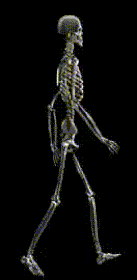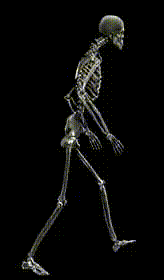Schweizaren Karl Müller bodde på 90-talet mitt bland risfälten i Korea.
Från rullsula till «walk-on-air»
I kybun MechanoTherapie ingår:
- kyBounder - stå- och träningsmattor
- kyBoot- skor
- kyTrainer - löpband.
kybun MechanoTherapie är enligt Karl Müller en erfarenhetsbaserad vetenskap som sett detta sammanhanget mellan underlag och hälsa och utvecklat produkter som gör att vi på konstgjorda platta underlag kan må lika bra som i naturen. Mjukelasticiteten i kyBounder, kyBoot och kyTrainer stärker fötterna, förbättrar hållningen, ger ryggmusklerna avspänning, skonar lederna och avlastar venerna i underbenen. Fötterna får full rörelsefrihet och kan fungerar som det är ”tänkt”.
We can walk as much as we like but if the quality of the movement is wrong, it will make us even less mobile and our manner of walking even more painful.
A rolling stone gathers no moss. It’s not the entire person that stops, just individual muscles and muscle groups. That’s a far greater problem than the quantity of movement! It’s not enough to say: ‘I walk/jog/hike regularly.’ That would be like saying: ‘I eat enough carbohydrates, vegetables and meat.’ Yes, but what about the vitamins, minerals and essential nutrients?
It has been proven that a healthy diet is characterised by the quality or nutrient density rather than the quantity of food consumed. The same applies to exercise. Getting plenty of exercise is not the only crucial factor for a healthy body. In reality, it is the quality of the exercise that ensures long-term health and well-being.
By not exercising the small, deep layers of balancing muscles, only the outer layers of muscle are trained, while the small balancing muscles relax. Unless you spend a few hours a day walking barefoot in the sand, walking on soft, springy surfaces or a tightrope or doing balancing and stretching exercises, you will become less mobile because muscle imbalances immediately cause ‘fascia agglutinations’ that minimise the scope of movement of the joints, meaning you become increasingly immobile over the course of your lifetime.
What are fasciae and why do they play such a key role when it comes to movement and freedom from pain?











